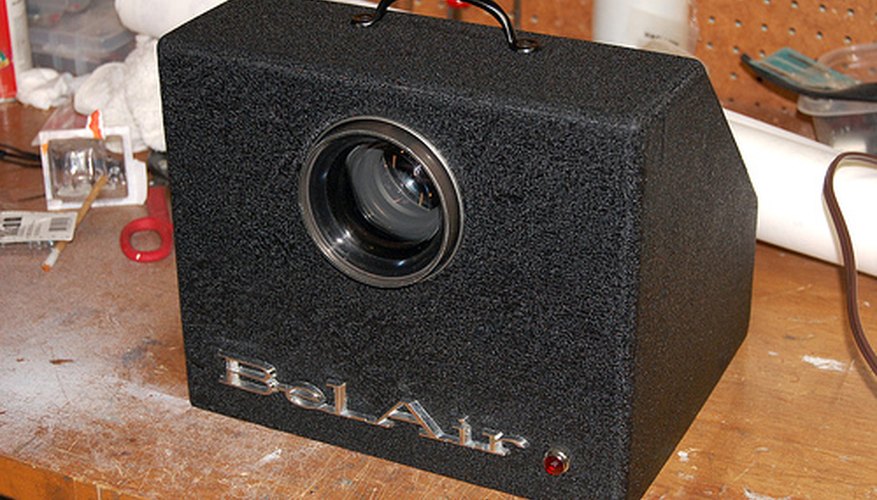An opaque projector projects a picture onto a wall or other area larger than the original to trace artwork onto a wall or poster, for example. Opaque projectors differ from other types of projectors in that the image projected does not have to be transparent. It is fairly easy to make an opaque projector that is able to project much larger originals than more expensive commercial projectors.
Building the Projector
You can build the housing out of any material as long as it is light-tight and not too heavy to pick up. Scrap plywood works fine. Figure out the bottom dimensions before you begin because this will dictate how big your original copy to be projected can be. You will ultimately place the projector on top of the original to project it. A measurement of about 9 inches by 12 inches should accommodate most originals.
Although you can purchase many different kinds of lenses, you can also use surplus lenses like those from copy machines, which is much less expensive. Cut a round hole in the middle of the front of the housing to accommodate the lens. Glue in a tin can large enough to slide the lens through with both ends removed. Discarded food cans work well for this. Wrap the lens in yarn to facilitate sliding inside the can and also to eliminate light leaks. Focus the image by turning the lens and sliding it back and forth inside the can.
The back of the housing should have a slanted upper half, a 45-degree angle. Install a mirror there to reflect the opaque copy from the bottom onto the lens. If you will use the projector for presentations or video, get a front-surface mirror because back-surface mirrors reflect a ghost image. Paint the inside flat black to reduce light reflections.
- You can build the housing out of any material as long as it is light-tight and not too heavy to pick up.
- Figure out the bottom dimensions before you begin because this will dictate how big your original copy to be projected can be.
- Install a mirror there to reflect the opaque copy from the bottom onto the lens.
Mount two ceramic light sockets on each side in the upper front corners of the box, properly wired. The light inside should be equal to about 100 watts of incandescent light. Use two 23-watt energy-efficient fluorescent bulbs; they are much cooler. Drill four or five small holes in the top or sides of the housing to vent heat. Don't put the vent holes in the front because the light will dim the projected image. Make aluminium foil reflectors for each light bulb that point down to the original copy.
Optionally, embellish the projector any way you want, such as installing a toggle switch for the lights, painting the outside, and installing an indicator light.
